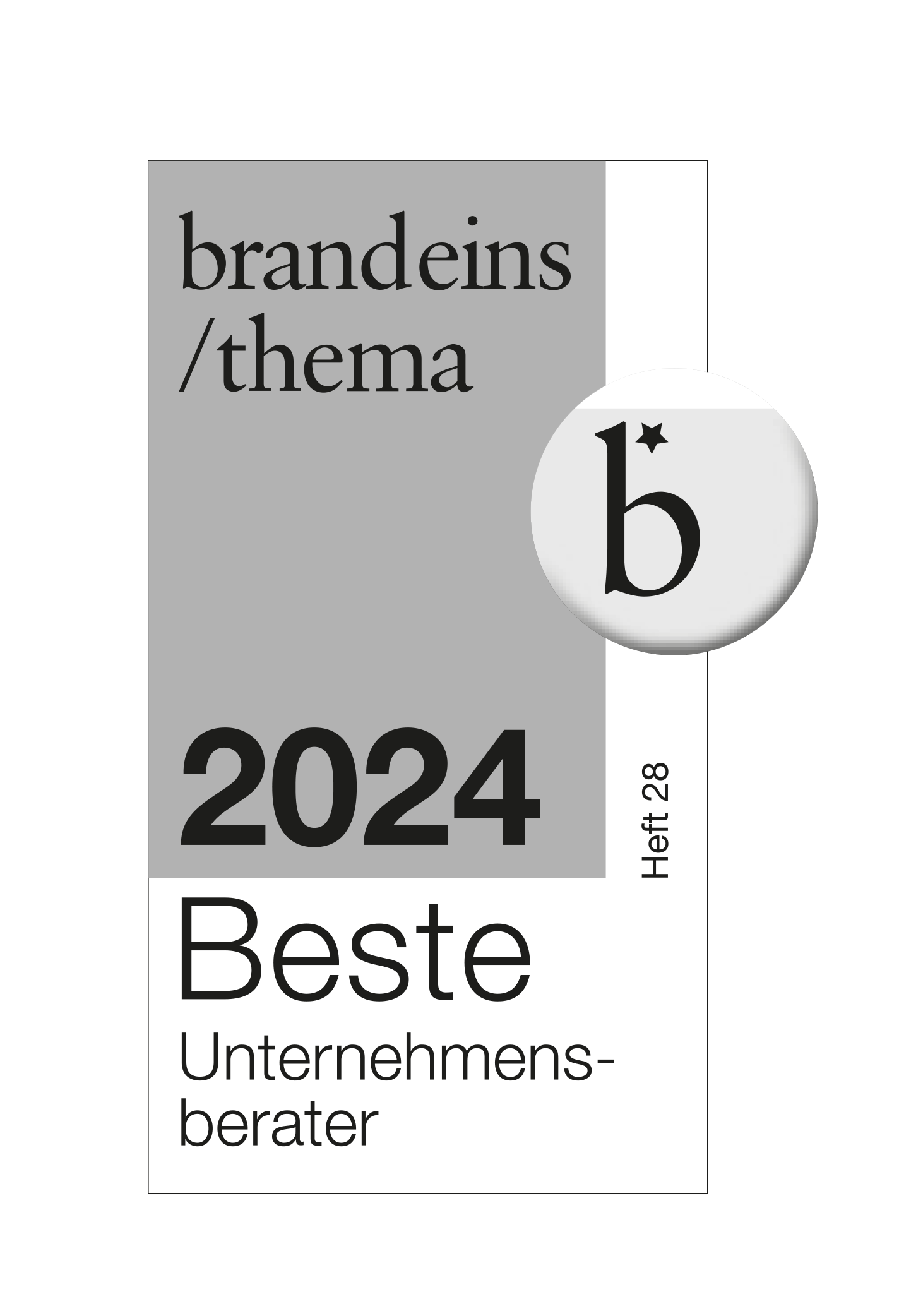Platform Ecosystems
Platform ecosystems are playing an increasingly key role in companies' digitalization strategy. They bring together producers and consumers via the Internet and enable innovative business models. To allow new ecosystems to emerge and grow, platforms must have specific features and qualities that significantly distinguish them from conventional platforms.
With a 40 percent share of the Nasdaq 100, the big five Apple, Alphabet, Microsoft, Facebook and Amazon form the epicenter of the platform economy which is surrounded by platforms such as Uber, Airbnb or Netflix. The platform index, a stock index of the 15 best platforms has doubled in the past three years – far outpacing the growth of the Dax30, Dow Jones Industrial or Nasdaq 100 stock indices. Platforms such as Spotify, Zalando or Scout24 are leaders in Europe, a comparatively small market. Even with SAP, European companies only account for a 3 percent share of the global platform economy – measured in terms of stock market value.
Compared to the U.S., where 67 percent of the global stock market value of the platform economy is located, there is a tremendous need to catch up; but also enormous growth potential. Driven by the hope of being able to raise the growth potential in Europe as well, the development of platform ecosystems is at the top of the digitalization strategy agenda of numerous large German companies. For example, Star Alliance is working together with Accenture to develop a digital services platform to deliver an enhanced travel experience across its network of participating airlines. New platform alliances are emerging in the entire market and across all markets and business relationships.
However, setting up platform ecosystems is no easy matter. After all, platforms need special features and capabilities to allow new ecosystems to emerge and grow dynamically. This makes them quite different in nature from the familiar conventional platforms, which in the past were more responsible for increasing efficiency and optimizing companies, but did not scale beyond company boundaries. What are the features and qualities that new platforms require and how can these be implemented in companies?
Do you have any questions?
What is a platform ecosystem?
Pivotal to platform ecosystems is the ecosystem itself. Every ecosystem creates value for all the players involved. Only if the value that the ecosystem creates is actually available to all players can the ecosystem grow dynamically and sustainably. Otherwise, the ecosystem will either not emerge in the first place, stagnate or fall apart.
The players in the ecosystem take on different roles such as producers and consumers. The assignment of the roles is not static. This means the players can swap roles at will or even take on both roles simultaneously. In the latter case, they become prosumers, a portmanteau word made of producer and consumer.
The platform, in turn, provides the habitat of the ecosystem. The better the habitat, and thus the platform, addresses the requirements and wishes of consumers and producers, the stronger and more sustainable the ecosystem can grow.
The owner owns the platform and generally provides it. Via the platform, the owner defines the rules within the ecosystem, with the goal of growing the ecosystem. The platform contributes value-increasing services to the ecosystem that vary in relevance depending on the role of the player.
In the case of Mytaxi, the value created by the ecosystem is the arranging of taxi rides. Taxi drivers offer taxi rides, passengers request taxi rides. Mytaxi, in turn, arranges and brings all players together. The IT system, which acts as a broker between passengers and drivers, and which can be used via smartphone app, is itself the platform and thus the habitat of the ecosystem.
New business models
With the Mytaxi platform, Daimler AG is penetrating a market, which is new to them. This is because until now Daimler AG has developed, manufactured and sold cars, and was less interested in customers' individual journeys. Not only Daimler AG, but many companies expect platform ecosystems to enable them to establish new products in new markets and thus attract new customers. Companies are no longer just interested in refining existing products for their customers and growing in well-known markets. Combining existing markets will give rise to new markets that create new value.
These new markets are governed by new rules regarding added value. It is not the company that provides the value via the platform, but the value of a platform ecosystem is created in the ecosystem itself, through the networking and interacting of the players. In the case of Mytaxi, Daimler AG does not provide the taxi drivers but every taxi driver in Europe, with a valid taxi license, can join the ecosystem as a producer, increasing the value of the platform.
A more stringent form of new business models is disruptive. In this case, the new ecosystem is so successful that it completely replaces existing ecosystems. Mytaxi could completely replace the conventional taxi business in the future. This can already be seen in the U.S. with Uber. The conventional taxi business there has declined significantly.
These new markets are governed by new rules regarding added value.

Ontology: Ecosystems, which are to grow dynamically for the benefit of all players, take the center stage. The platform creates the basis for this growth. It must be open, attractive and must enable exchange.
Openness, attraction, exchange
The business models described are thus giving rise to a whole new type of dynamic ecosystems. Their characteristic feature is that they are only newly emerging, that the added value is created within them, and that they can grow at a rapid pace. When these ecosystems are still in the build-up phase, the players are also neither known nor bound by regulations until they join the ecosystem. These features mean that the consumers and producers initially have a strong degree of autonomy and anonymity. Once they have joined the ecosystem, the level of autonomy and anonymity decreases because the initial data collected can be used to influence their behavior via the platform.
In contrast, conventional business models create static ecosystems. These consist of an existing ecosystem whose added value lies in the companies themselves and they only grow weakly. In static ecosystems, the players are known and can be addressed and controlled as required.
Platforms for dynamic ecosystems have the important task of allowing these ecosystems to emerge in the first place. To do this, the platforms must have specific features and capabilities - openness, attraction and exchange - which are of particular importance.
The following chapters contain a description of these features and qualities from a service perspective. However, they are of a general nature and also apply, for example, to the organization, processes and culture of a company.
Openness
The platform feature 'openness' opens up the ecosystem for the added value process by all players. The openness of a platform can be viewed from different perspectives.
One perspective is the openness of the platform as a form of new partnerships and cooperations among companies to develop the platform together. The platform can also be opened up to developers for them to participate in the added value process. A well-known example of this is Apple, which, in addition to an IDE, different SDKs and diverse cloud solutions, even provides its own programming language to leave the development of apps to the developers. The platform would not be successful without these developers. At the same time, technologies are also important for the openness of the platform. For example, open standards or the use of open source software could open up the platform from a technical perspective. Openness from the perspective of the players in the ecosystem means, for example, that they can be consumer or producer at will - usually with few conditions - but may also swap roles or take on both roles at the same time.
The platform must now offer services that ensure the openness of the ecosystem. The challenge here is to guarantee the quality of the value of the platform in spite of the openness. This is especially difficult in view of the potential autonomous and anonymous players in the ecosystem. In the case of Mytaxi, a taxi driver who has refused a certain number of rides is sanctioned. Consumers can also be sanctioned if their behavior has a negative impact on the ecosystem. One example of this is Ebay. Here, not only do buyers rate sellers but sellers also rate buyers. The degree of openness of a platform is determined strategically by the platform owner. The openness of the platform can also change during its life cycle if it becomes apparent that the value of the platform is declining and the ecosystem is shrinking.
The example of SAP Cloud Platform shows the consequences and possibilities of the increasing technical openness of a platform. Third-party suppliers are allowed to develop and sell applications on SAP Cloud Platform, which are complementary to the core ERP suite from SAP itself. SAP is consciously engaging in this competition and making it part of its platform strategy. The basis of the SAP cloud platform is the open source framework "Cloud Foundry", it is compatible with various cloud infrastructure providers such as Amazon with AWS or Microsoft with Azure and has lowered the entry barriers for third-party developers Free trial access to the platform allows developers to play through use cases without risk before going to market with them. This has enabled a dynamic ecosystem to emerge that now includes more than 1,600 third-party developer applications in the SAP App Center, the SAP Cloud Platform marketplace, in addition to customer-specific applications.
Quality must be guaranteed in spite of openness.
Attraction
In any dynamic ecosystem, the first consumers and producers must be drawn to the platform to make the platform attractive for further players. With the mutual influence of consumers on producers and vice versa, a network effect can then be created. The platform feature 'attraction' is responsible for attracting consumers and producers to the ecosystem.
The Mytaxi startup launched in 2009 with the first global taxi app in Hamburg. Today, Mytaxi is present in 70 cities and 13 countries across Europe. The ecosystem has grown to 16,000 taxi drivers and 13 million passengers. This is thanks to the strong attractiveness of the Mytaxi platform.
A platform must thus offer services that enable this growth in the ecosystem. Here too, the autonomy and anonymity of the players pose major challenges for platform operators. After all, how can consumers and producers be drawn into the ecosystem if it is unclear where to find them and how to inspire them?
The principles pull, facilitate and match, facilitate and match, on the basis of which platform services can be implemented, are intended to solve this problem. Single feedback loops are an example for pull principles. These are algorithms that analyze the activities of known consumers on the platform in order to draw conclusions about their interests, preferences and needs. This knowledge can be used to inspire each consumer individually. Even unknown players can be analyzed and specifically influenced using appropriate methods.
The example of a European financial institution shows that the openness of a platform alone is not sufficient to allow a dynamic ecosystem to emerge. The technical opening of interfaces and the provision of resources such as documentation and test environment remain only a basic prerequisite for third-party developers to be able to develop applications for the players at all. However, if only a few customers are interested in granting third-party developers access to their data, then the incentive for third-party developers to invest resources and working time is also low. The platform provider thus misses the opportunity to set itself apart from the competition with a dynamic platform ecosystem with innovative applications. In the first step, it is thus necessary to gain the interest of the customers and to achieve initial attractiveness for example through jointly developed and marketed applications.
Players must willingly disclose their data
Exchange
The exchange of information, products or services between consumers and producers is a mandatory prerequisite for the added value process in the ecosystem. In the case of Mytaxi, the platform shows the passenger a nearby driver. Shortly after the order has been placed, the taxi driver is ready to pick up the passenger for the arranged taxi ride. The passenger reaches their destination and shortly afterwards receives a short confirmation of the automatic debiting of their account.
The platform must support these activities by providing services that enable the exchange of information within the ecosystem. The challenges here are also the high level of autonomy and anonymity of the players in the ecosystem. Consumer behavior can neither be predicted nor predefined. Consumers and producers even use any type of end devices, across different device classes, from smartwatches to smartphones and with different operating systems from iOS to Android. At the same time, they expect fast, stable and secure transactions and services that are as widespread and easy to use as possible. The services must be available at any time, guarantee short response times and this with strong networking in a heterogeneous environment.
The example of Integreat, an information platform for refugees, shows that the ability to exchange information is also relevant for non-profit platform ecosystems. On Integreat, municipalities, non-profit service providers and volunteers provide important, locally-specific information for refugees. In this case, municipalities, service providers and volunteers play the role of producers, while the refugees - at least initially - play the role of consumers. This enables the municipalities to provide targeted advice, while the refugees benefit from reliable information. The platform itself supports the exchange of information through services such as a search function, translation option and local buffering of information for offline availability. This way, a dynamic ecosystem was created in which chambers of commerce and craft associations also participated over time. They used the access to refugees to offer internships or apprenticeships.
Integreat is an information platform for refugees and shows that exchange is also relevant for non-profit platform ecosystems.
The bottom line: High potential, great challenge
Platform ecosystems also offer European companies enormous growth potential, as a look at the existing market in the U.S. shows. The platforms there create highly dynamical ecosystems, often start from scratch, must be open to new consumers and producers in the value added process and must be very attractive to let ecosystems actually grow. At best, by making other ecosystems redundant.
This requires platforms that deliver openness, attractiveness and exchange. The specific nature of these features and qualities must be determined for each form of platform and can change during the lifecycle of a platform. In particularly critical domains and use cases, openness must be balanced against the benefits for the ecosystem. If niche sectors are addressed, the level of attraction has limited impact because the target audience is small anyway and there are few competing ecosystems. Above all, it is important that the platform's features and qualities support the business model.
Providing platforms that meet these requirements is extremely challenging. In particular, companies, which until now have relied on conventional platforms for static ecosystems, have little experience of setting up these platforms. It is therefore important that companies develop a common understanding and a uniform language for the new type of platforms. On this basis, a vision and strategy can be shaped for the platform and gradually implemented. Otherwise, there is a risk that conventional platforms will emerge again that do not work in the new markets.
Perspective
It can be observed that large companies are taking up the challenges and looking for solutions. For example, Adobe, Microsoft and SAP have established the Open Data Initiative with the goal of enabling a secure and easy exchange of data between platforms. One vision would be to make these platform services universally available for all companies to use, similar to database services at Azure, Amazon or Google.
The French startup Mirakl is a good example of how exchange can be offered as a service. Mirakl enables online store operators to open their store and thus their platform to third-party providers. This leads to a direct exchange between retailers and customers. This way, store operators can quickly expand their product range without having to offer the products themselves. It was this marketplace principle that made Amazon's success possible at all.
Authors

Michael Schäfer
Principal IT Consultant, msg Applied Technology Research

Michael Schäfer
Principal IT Consultant, msg Applied Technology Research
Michael Schäfer is a consultant, trainer and coach at msg. His subject area is systems of engagement, both their technical implementation and their market relevance. He is also at home in the world of Java and spring ecosystems.

Maximilian Schreieck
Prof. Dr. Helmut Krcmar
Technical university Munich

Maximilian Schreieck
Prof. Dr. Helmut Krcmar
Technical university Munich
The article was written in cooperation with Maximilian Schreieck, research assistant at the Chair of Information Systems at the Technical University of Munich, and Prof. Dr. Helmut Krcmar, holder of the Chair of Information Systems at the Technical University of Munich.

